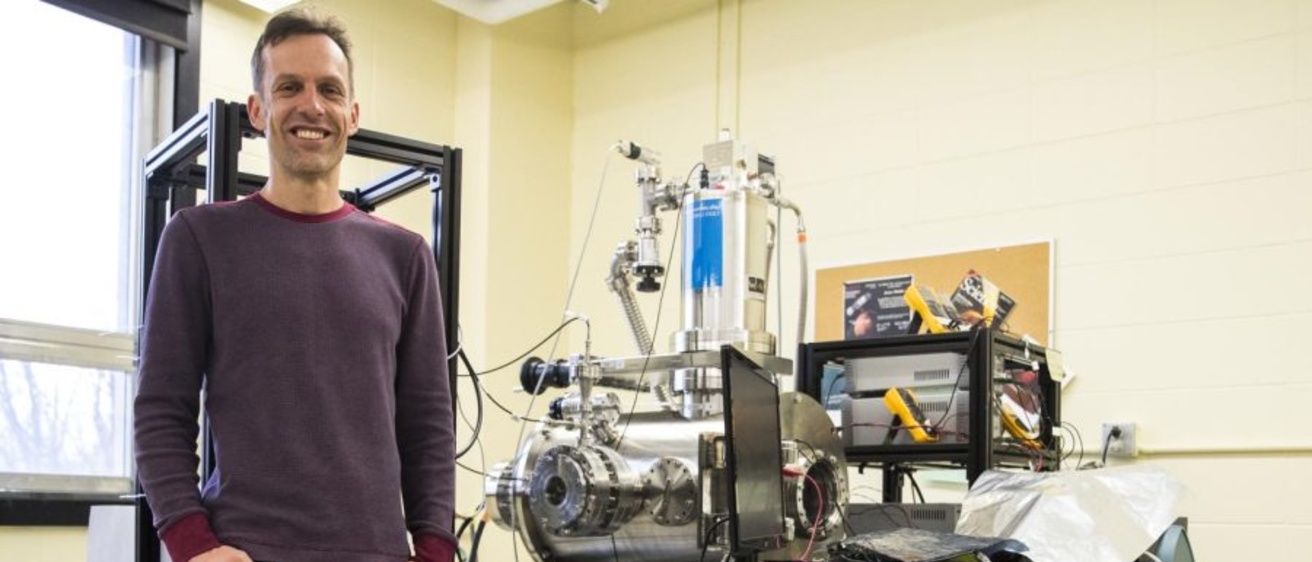A University of Iowa professor will soon explore the swirls on the surface of the moon.
Jasper Halekas, associate professor in the UI department of physics and astronomy, is the deputy principal investigator for the project “Lunar Vertex: Exploring the geoscience and space plasma physics.” He was awarded $160,443 from the Johns Hopkins University Applied Physics Laboratory and NASA, which will pay for the research team’s time working on the Lunar Vertex mission.
The mission launch is set for 2024, with a commercial lander to the moon that will examine the Reiner Gamma, one of the most visible markings on the moon’s surface from Earth. The Reiner Gamma has a unique pattern of light and dark soils.
David Blewett, planetary geologist at Johns Hopkins University Applied Physics Laboratory and principal investigator for the Lunar Vertex mission, said solar wind and micrometeorites may have caused the soil to darken over time.
“As the solar wind and micrometeoroids, tiny little dust and sand-sized grains, zap the surface there’s no atmosphere to block them out, like on the earth,” Blewett said.
Data collection from the 2024 launch will take 13 Earth days, which is equivalent to about one day on the moon’s surface.
Redwire Space, a space commercialization company, is providing a camera, Halekas said. The cameras will capture what is happening on the surface of the moon to cause swirl markings. The swirl features are similar to pouring creamer in a cup of coffee, he said.
Halekas said there are many theories about the swirl regions, but they have not been landed on before for proper measurements.
“We’re going to go there and make measurements right on this region and try and untangle these mysteries,” he said.
Blewett said the mission is solely relying on solar power.
“We’re going to have a little rover that is going to carry a magnetometer and sort of a microscope to look down out of the belly of the rover at the soil,” he said.
Blewett said the rovers are about the size of a shoebox, which doesn’t have much power and space.
A preliminary design review will be presented at the Johns Hopkins University Applied Physics Lab in May. Halekas, Blewett, and the rest of their team will describe all aspects of their mission during the review.
If the review succeeds, they will have the green light to continue, Blewett said.
“There’s so much we can learn about the moon, about the formation of the earth and the moon as a system, and about our solar system as a whole,” Blewett said.
Halekas said there might be more future projects revolving around the lunar swirl.
“I hope that future physics and astronomy students will actually be able to go to an archive and take the data that we collect on this mission and use it to answer scientific questions that we haven’t even thought of asking yet,” Halekas said.
By Simon Garza, News Reporter, Daily Iowan
Banner photo:
University of Iowa Associate Professor Jasper Halekas poses for a portrait in his laboratory at Van Allen Hall in Iowa City on Wednesday, March 30, 2022. Halekas researches the magnetic field on the moon’s surface.
Photo Credit: Jerod Ringwald, Daily Iowan
